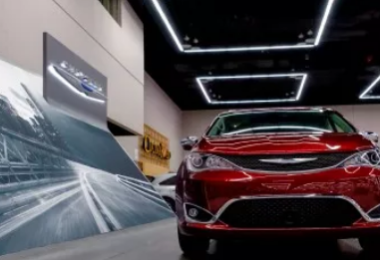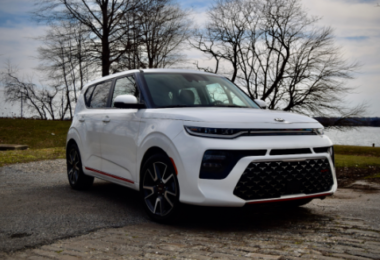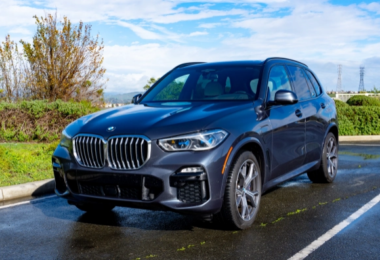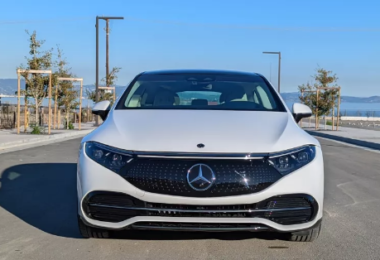Because there are so many crossovers and SUVs available, customers have several options outside traditional road-hugging automobiles. Where is the modest hatchback going? Hyundai is still pursuing it. The Korean carmaker already offers five crossovers, and the 2020 Venue is still in the works, but it managed to fit the 2019 Elantra GT N-Line in as well.

N is a new performance sub-brand for Hyundai, and full N cars are meant to be more upscale sports versions of current models. In the US, only the Veloster receives the full-fat N treatment rather than just an N-Line trim package. This car’s N-Line model is actually a step down, bringing sportier aesthetic cues and some mechanical improvements but no significant performance improvements.
Despite the fact that the exterior design of the two vehicles is considerably different, the Elantra GT is a hatchback built on the current-generation Elantra sedan. For 2019, the Sport is replaced by the N-Line at the top of the Elantra GT lineup. The base price of our test vehicle was $25,285, which also included the obligatory destination fee and an optional seven-speed dual-clutch transmission (a six-speed manual is standard).
For a piece of the ever-dwindling hatchback market, the Elantra GT competes against vehicles like the Honda Civic, Toyota Corolla, and Subaru Impreza. The Hyundai wanted to stand out among the competition while simultaneously promoting the hatchback as an idea.
Authentic design
Most automobiles that pass for SUVs are essentially cars dressing up. They are crossovers that have the higher, more durable bodywork of conventional SUVs but are built on car underpinnings. Designers must therefore make crossovers appear to be something they are not in addition to making them look attractive. On the other hand, the Elantra GT appears to be exactly what it is.
Like the Hyundai Kona, the Elantra GT doesn’t have a cutting-edge design. Simply put, it was brilliantly done. For a front-wheel drive vehicle, the car has surprisingly good proportions, and Hyundai’s designers avoided the pitfall of over-detailing to try to fancy things up, which cannot be said of their rivals at Honda and Toyota. Although the car doesn’t enter boy racer area, the N-Line trim level does add some model-specific stylistic elements, such as an 18-inch wheel design, front spoiler, and silver-trimmed grille.
Both the interior and exterior are equally honest. The Elantra GT is still very much an economy car despite having aluminum pedals, leather-wrapped steering wheel, and red contrast stitching in our N-Line test car. The majority of the interior trim was plain black plastic, but everything appeared to be well-assembled, which is all you can expect for with a vehicle in this category.
The interior ergonomics also made an impression on us. For further bolstering and to assist keep the driver and front passenger in place during turns, the N-Line has model-specific front sport seats (heated and ventilated on our sample). However, they were also incredibly cozy while cruising along a long stretch of highway in a straight line. The Elantra GT’s dashboard is quite close to the windshield, unlike many modern small front-wheel drive cars, offering the driver a greater forward view and making better use of the available inside space. To prevent smaller drinks from falling out of cupholders, Hyundai also provided two alternative sizes on the center console. It’s still acceptable to order more than one big soda because there are additional cupholders in the doors.
The infotainment system was simple to use and had menus that made sense.
The driver can easily reach the 8.0-inch infotainment screen because it is perched atop the dashboard. Apple CarPlay and Android Auto are standard features in the Elantra GT. Optional additions include wireless phone charging and navigation. We found the infotainment system to be simple to operate, with logically structured menus and strong visuals that were simple to comprehend at a glance, similar to other recent Hyundai cars.
The Elantra GT is competitive with other small hatchbacks in terms of interior spaciousness. Although the low height of the cargo floor can make removing objects difficult, it is near the top of the segment in terms of cargo volume. The Elantra GT seemed like the ideal size car, with more passenger and cargo room than the Hyundai Kona while being smaller than the Hyundai Tucson.
Weekday fighter
The Elantra GT N-Line is proof that regular vehicles can be entertaining to drive. Although it isn’t quite as insane as the Hyundai Veloster N or other similarly fast hatchbacks, it nonetheless makes the most of winding roads.
The N-engine Line’s is more potent than the Elantra GT’s standard engine. The 1.6-liter turbocharged four-cylinder engine previously found in the retired Elantra GT Sport model produces 201 horsepower and 195 pound-feet of torque, which is a respectable amount for a vehicle of this size. There was barely any turbo lag, and the car felt fairly speedy. However, it would have been wonderful if the exhaust system had been louder to round out the experience.
A six-speed manual transmission or the seven-speed dual-clutch automatic transmission in our test vehicle transmits power to the front wheels. The Elantra GT seems livelier because Hyundai chose a dual-clutch gearbox rather a traditional torque-converter automatic or continuously variable transmission (CVT), which slows down shifts. Dual-clutch transmissions typically give off refinement for lack of it, especially in stop-and-go traffic where the absence of a torque converter can result in jerky changes. But our test vehicle worked flawlessly, so there didn’t seem to be much of a compromise to be made. Bravo, Hyundai.
For the N-Line, Hyundai also made a few minor chassis adjustments. The N-Line Elantra GT includes more rigid engine and transmission mounts, larger brake rotors, retuned steering, and retuned suspension with firmer springs than the original Elantra GT. Although we had a standard Elantra GT to compare it to, the N-Line model felt quite excellent on its own. There was no sign of the understeer that frequently afflicts front-wheel drive vehicles, and the steering was crisp. Now we understand why Hyundai converted this vehicle—known worldwide as the i30—into a race car. In some areas, Hyundai also offers the i30 N model, which combines the Elantra GT body with the Veloster N drivetrain.
Like the Hyundai Kona, the Elantra GT doesn’t have a cutting-edge design. Simply put, it was brilliantly done.
Even after several kilometers of highway driving, we found the ride quality to be tolerable despite the firmer suspension’s negative effects. We think the Elantra GT would be a decent choice for commuting because the inside was rather quiet for an economy vehicle.
Also entertaining are vehicles like the Mazda 3, Honda Civic, and Volkswagen Golf. Elantra GT N-Line, however, continues to stand out. The Elantra is naturally better at canyon carving than the average crossover because to its low center of gravity and lighter curb weight, as are all hatchbacks and sedans. We were curious to drive the manual-transmission model, which also has summer tires with more traction, after our experience with the dual-clutch N-Line. We believe that would be a really enjoyable daily driving.
The useful information
The EPA rates dual-clutch Elantra GT N-Line cars like the one we drove for 28 mpg combined (25 mpg city, 32 mpg highway). That is marginally superior to the manual-transmission model’s combined fuel economy rating of 26 mpg (23 mpg city, 30 mpg highway). The standard Elantra GT has a naturally aspirated 2.0-liter four-cylinder engine and a six-speed automated transmission, and its combined fuel economy rating is 27 mpg (25 mpg city, 32 mpg highway). Those figures are a bit low for this market. The combined fuel economy of the Honda Civic, Subaru Impreza, and Volkswagen Golf are all at least 30 mpg, while the Toyota Corolla’s combined fuel economy with the optional CVT is 36 mpg.
Standard driver-assist technology is completely absent from the Elantra GT N-Line. Only as part of an optional technology package, Hyundai offers adaptive cruise control, lane keep assist, frontal collision warning, and a driver attention monitor. Adaptive cruise control and lane keep assist are features that come standard on the Honda Civic and Toyota Corolla hatchbacks, while they are also included on the Mazda 3 hatchback together with a driver attention monitor.
The Insurance Institute for Highway Safety (IIHS) awarded the 2019 Hyundai Elantra GT a Top Safety Pick, however due to ineffective lighting and child-seat anchors, it didn’t receive the better Top Safety Pick+ grade. The National Highway Traffic Safety Administration gave the hatchback a total rating of four stars (NHTSA). Based on the outcomes of one of three side crash tests, the federal safety agency indicated that there was a higher risk of injury to passengers in the backseat, preventing the Hyundai from receiving a perfect score.
Hyundai continues to provide some of the greatest coverage in the industry with its 10-year, 100,000-mile powertrain warranty and five-year, 60,000-mile limited warranty. Consumer Reports gave the Elantra an above average dependability rating for the 2018 model year, which is the most recent for which data is currently available (the publication doesn’t publish separate results for the sedan and GT hatchback). In the most recent J.D. Power Initial Quality Study, Hyundai did well as a brand.
How DT would set up this vehicle
We do believe that the six-speed manual transmission and summer tires would elevate the Elantra GT N-Line, but since we were unable to test drive one, we are unable to make a definitive judgment. However, we would choose an N-Line above an Elantra GT’s base model. The nearly $4,000 price difference between a base Elantra GT and our N-Line test car seemed reasonable given the more potent engine, sharper gearbox, and chassis modifications.
In order to receive adaptive cruise control, lane keep assist, and the driver-attention monitor, we would also add the technology package. A motorized driver’s seat, heated front seats, an improved audio system, and Qi wireless phone charging are all included in that package.
Summary
The 2019 Hyundai Elantra GT N-Line doesn’t appear to be a standout on paper. Even with 201 horsepower, the N-Line can’t compete with full-bore hot hatchbacks like the Volkswagen Golf GTI. Other small hatchbacks are more advanced in terms of outward style, technology, and fuel efficiency. For inclement weather, the Subaru Impreza and the Mazda 3 both provide all-wheel drive. But the Elantra GT N-Line goes above and beyond its specifications to provide a pleasurable driving experience in a practical package. It serves as a reminder of how excellent normal cars can be and demonstrates why a hatchback is still a fantastic substitute for a crossover. To do that, Hyundai didn’t need to use gimmicky aesthetics or an overly complex infotainment system. Many buyers might avoid the Elantra GT because of its reserved nature, but astute purchasers shouldn’t.
Do you need one?
Yes. This is the only vehicle you’ll require unless you live somewhere with severe winters and are required to have all-wheel drive.
You can also check 2020 Lamborghini Huracán Evo Spyder review and other things you need to know about this product







